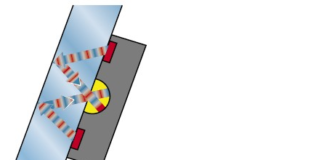Renault is considering a significant price reduction—potentially up to 15%—on its 4, 5, and new Twingo models. This strategy hinges on the European Union’s (EU) pending approval of a new “E-Car” category, designed to emulate Japan’s kei car framework. Instead of developing entirely new vehicles, Renault aims to leverage this new class to lower costs and make its current models more accessible.
The EU’s Plan for Affordable Electric Mobility
The EU’s proposal seeks to establish a segment of small, affordable electric cars specifically for the European market. This initiative is driven by several key factors. Firstly, it aims to boost electric vehicle (EV) sales across the continent, which remain below desired levels. Secondly, it seeks to safeguard jobs within the European automotive industry. Finally, it’s a response to the growing competition from increasingly affordable, state-subsidized electric vehicles manufactured in China, which are impacting established European carmakers.
Pausing Regulations: A Key to Cost Reduction
Renault Group boss François Provost stated that the success of this strategy depends on a temporary pause—spanning 10 to 15 years—in the implementation of new vehicle safety regulations. He explained that this would free up engineering resources currently dedicated to adapting to yearly regulatory changes. Instead, engineers could focus on improving existing models and, critically, decreasing their production costs.
“I don’t ask to remove regulation. No, I just ask to have 10 or 15 years without new regulation. Because today, what is planned by Europe is 107 new regulations on automotive by 2030.” – François Provost
Currently, the annual addition of new safety regulations, particularly advanced driver-assistance systems (ADAS) and other safety technologies, significantly adds to the cost of both new and existing cars. Provost emphasized the inefficiency of engineers repeatedly modifying designs to comply with these evolving rules.
Potential Criteria for the E-Car Class
While the final details of the E-Car category are still being finalized, Provost offered insights into Renault’s ideal criteria. These include:
- Size: Cars with a length of less than 4.1 meters.
- Emissions: A lifetime CO2 footprint of less than 15 tonnes.
- Local Content: Utilization of locally sourced components, including batteries.
The proposed parameters align closely with the EU’s ongoing discussions with European car manufacturers, suggesting they represent a likely outcome.
Impact on Renault’s Models
If the E-Car class is approved under these parameters, Renault’s 4, 5, and new Twingo would be eligible. According to Provost, the goal isn’t to create entirely new vehicles specifically for this class. Instead, the strategy focuses on leveraging the category to “decrease the price” of existing models. These vehicles already target the core of the European market within the A- and B-segments.
The creation of this new category offers a pathway for Renault to make its popular small electric vehicles more competitive and affordable for European consumers. By focusing on cost reduction and leveraging the E-Car class, Renault hopes to increase EV adoption and strengthen its position in the European market.






















